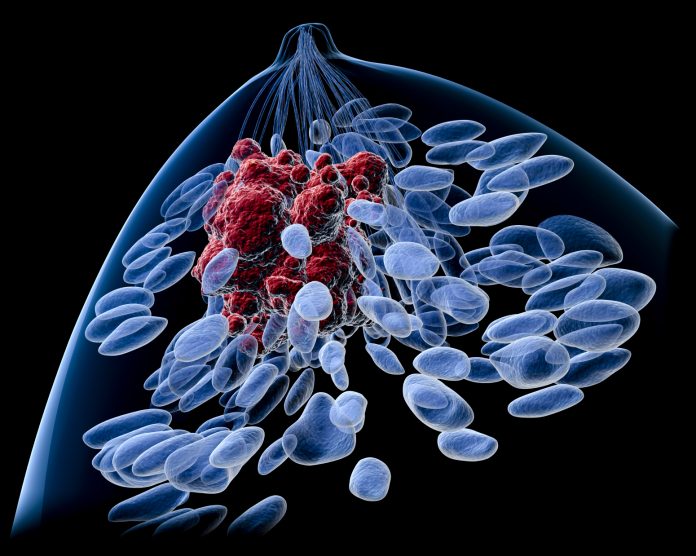
A new study from the Food Packaging Forum identified approximately 200 potential mammary carcinogens lurking in everyday food packaging, both in plastic and paper products. These chemicals have raised significant concern due to their prevalence in food contact chemicals (FCMs), potentially exposing consumers to harmful substances. The study is published in Frontiers in Toxicology.
The study revolves around 200 potential mammary carcinogens, identified using a method based on the World Health Organization’s 10 key characteristics of toxicants. This approach allows scientists to screen chemicals for carcinogenic potential based on molecular properties. While some of these chemicals have been definitively linked to cancer in rodent models, many remain in a gray area, classified as potential carcinogens due to insufficient human data.
The research team used a concept called the “key characteristics of toxicants” developed by the International Agency for Research on Cancer (IARC) which regularly reviews chemicals and other agents with respect to being human carcinogens. Using that construct, the team started with a list of 921 potential mammary carcinogens. “We then compared it to our own list of more than 40,000 food contact materials,” explains senior author Jane Muncke, PhD. These include food packaging but also food processing equipment materials, tableware, and anything that comes in contact with food.
When they compared the two lists, Muncke’s team found an overlap of 189 chemicals. For some, they were already classified as carcinogens and the remainder were considered highly likely to be endocrine disruptors. Overall, 143 potential mammary carcinogens were detected in plastics and 89 in paper or board products.
Further, for 76 of these chemicals, there is strong evidence showing that they leach into food from packaging materials. “We know that for 68 of those 76 chemicals, it’s highly probable that people are exposed to them via food packaging,” Muncke explains.
The problem extends far beyond plastic, which has long been criticized for its environmental and health impacts. Muncke notes that many consumers are unaware of the potential hazards lurking in paper and board products, especially recycled materials. “Recycled paper and board are one of the worst sources of chemical migration,” she explained. “In Switzerland, we’ve actually banned the use of recycled paper for food contact due to the risk of hazardous chemicals leaching into food.”
Even non-recycled paper and board products pose a risk. In the study, 47% of paper and board materials tested contained mammary carcinogens, a shocking revelation for those who believe that switching from plastic to paper is a safer alternative. “It’s important for consumers to understand that it’s not just plastics,” Muncke emphasized. “These chemicals are found in almost all types of food packaging, except for glass.”
Practical steps to reduce carcinogen exposure
For consumers concerned about chemical exposure from food packaging, Muncke offers practical advice. “There are four main factors to consider: high temperatures, long storage times, the chemistry of the food, and serving sizes,” she advised. Foods that are acidic or contain fats, such as tomato sauce or mayonnaise, are more likely to absorb chemicals from packaging. Additionally, smaller serving sizes tend to result in proportionally higher levels of chemical migration, due to the surface area-to-volume ratio.
Muncke suggests switching to safer alternatives, such as stainless steel, glass, or ceramic containers, particularly for long-term food storage. She also recommends buying locally sourced, organic foods and preparing them at home, which reduces the need for processed foods that often come in contact with hazardous packaging materials. “Avoid electric plastic kettles, plastic spatulas, and black plastic ladles,” she advised. “Replace them with wooden or stainless-steel utensils. The same goes for cutting boards—switch to wood or glass, and steer clear of plastic and silicone.”
Ultimately, addressing the issue of mammary carcinogens in food packaging requires both regulatory action and consumer empowerment. While government agencies have been slow to act, Muncke urges individuals can take steps to protect themselves by making informed choices about the food they buy and how it is stored. “Every country in the world is behind in regulating this issue,” she says. “But we have to empower ourselves by understanding the risks and taking steps to minimize them.”





